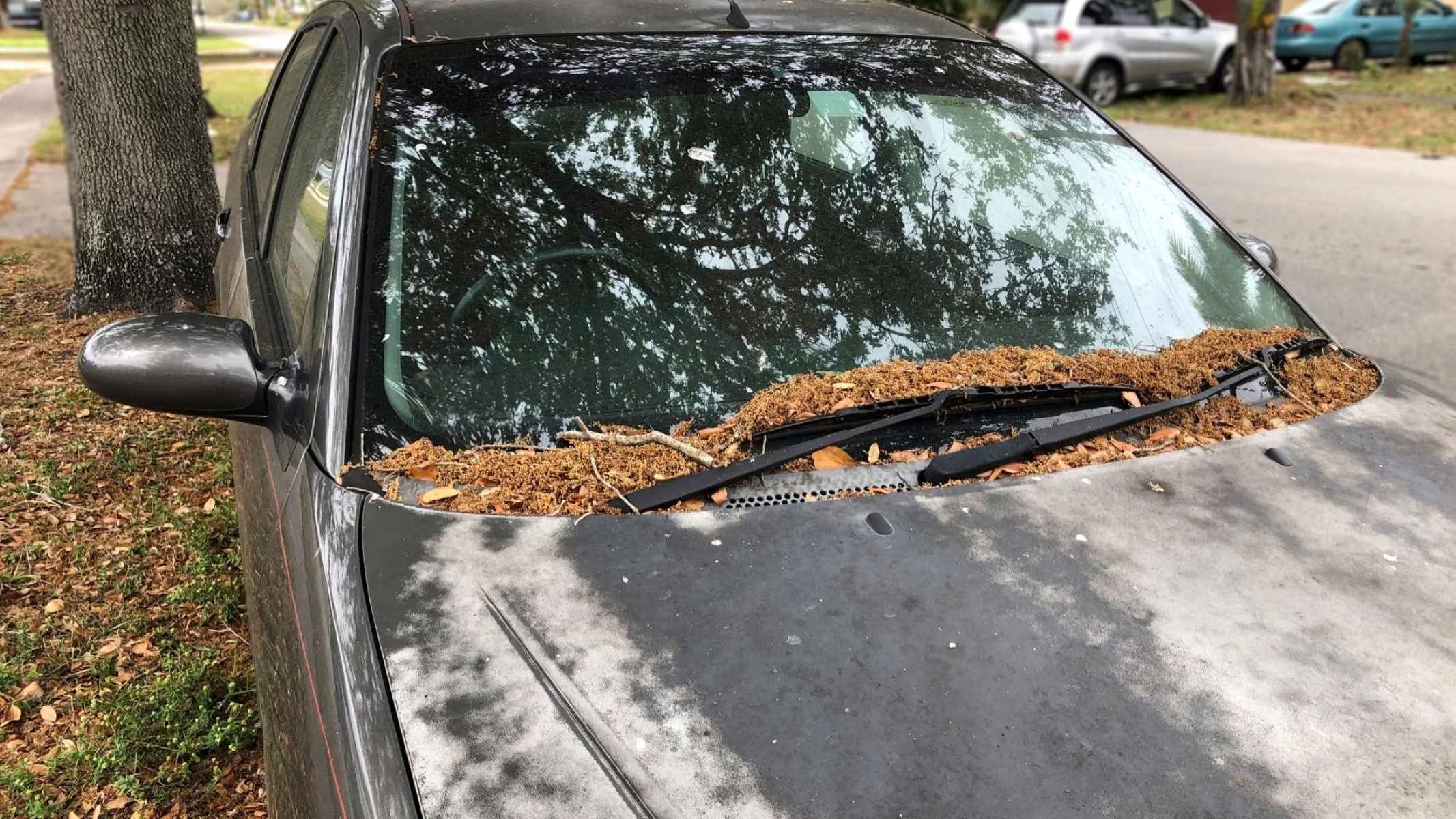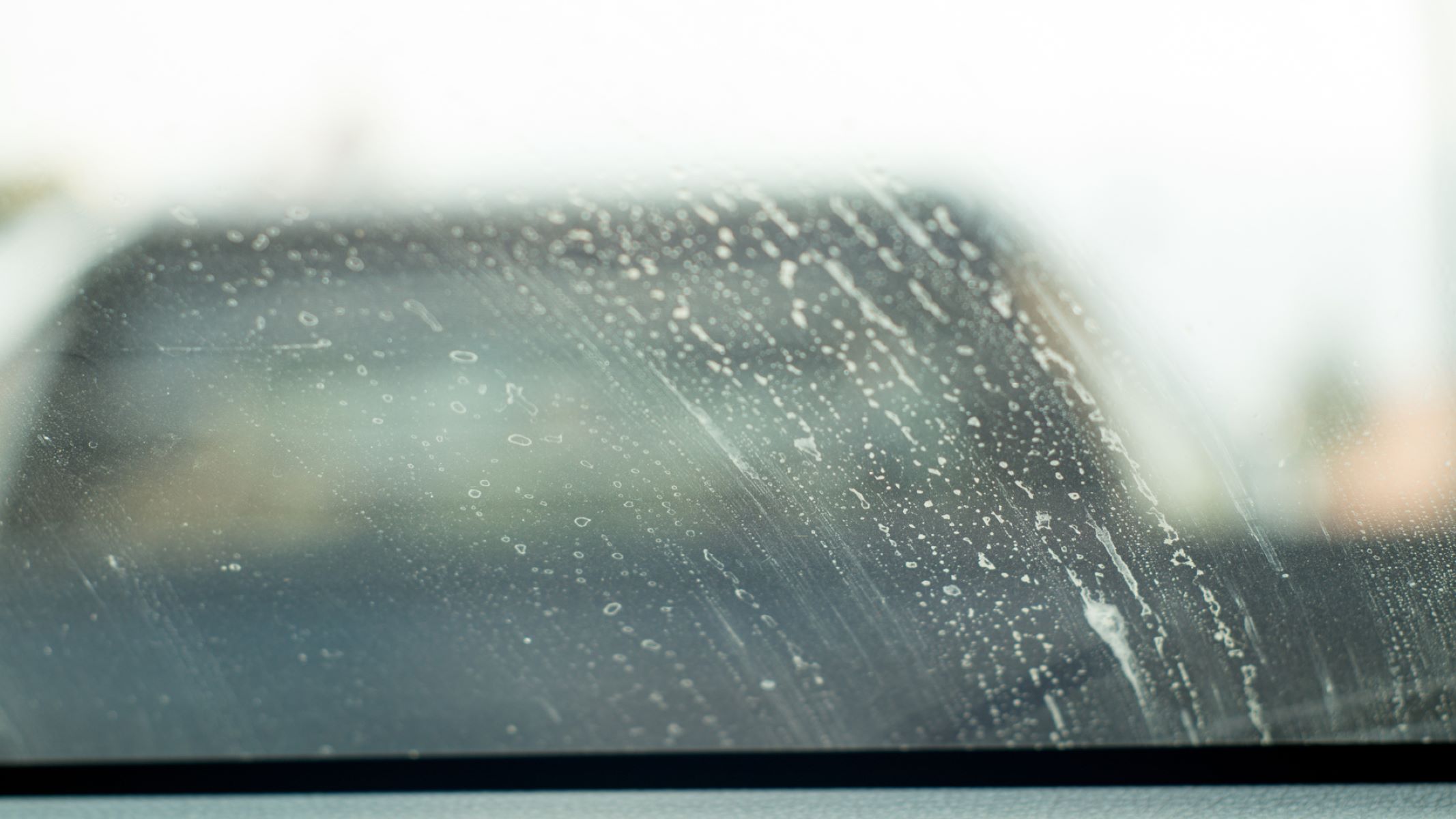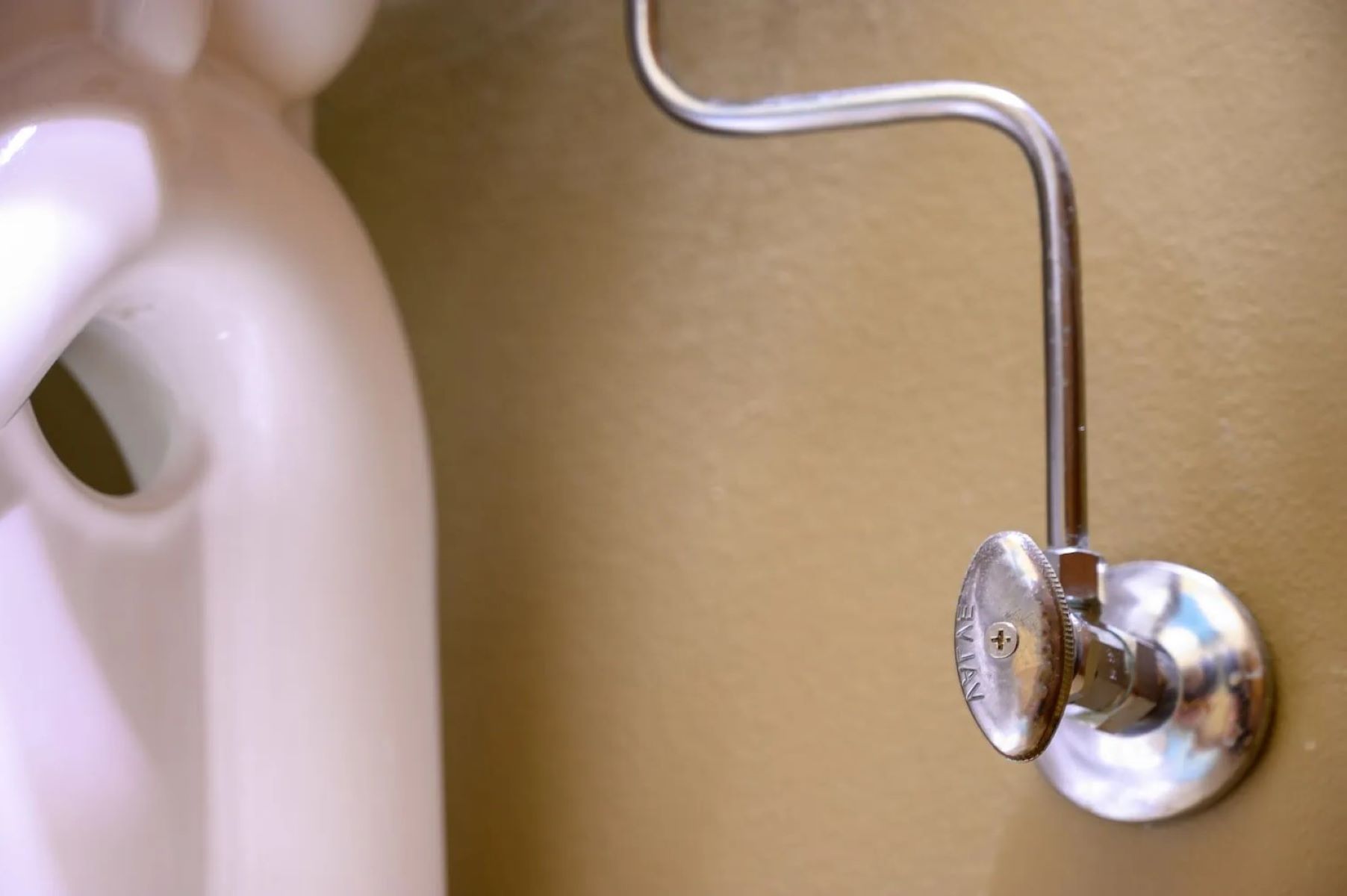Home>Automotive>How To Get Tree Sap Off Windshield


Automotive
How To Get Tree Sap Off Windshield
Published: February 28, 2024
Learn effective methods to remove tree sap from your windshield with these automotive tips. Keep your windshield clean and clear with our expert advice.
(Many of the links in this article redirect to a specific reviewed product. Your purchase of these products through affiliate links helps to generate commission for Regretless.com, at no extra cost. Learn more)
Table of Contents
Introduction
Dealing with tree sap on your windshield can be a frustrating and unsightly issue. Whether you park under a tree regularly or simply find yourself in the wrong place at the wrong time, the sticky residue left behind by trees can quickly become a nuisance. However, fear not! There are effective methods for removing tree sap from your windshield, and even better, preventative measures to keep your windshield sap-free in the future.
In this comprehensive guide, we will delve into the world of tree sap and explore the various techniques for safely and efficiently removing it from your windshield. From commercial products specifically designed for this purpose to common household items that can work wonders, we've got you covered. Additionally, we'll discuss preventive measures to help you avoid the hassle of dealing with tree sap buildup in the first place.
So, if you've found yourself staring at sticky splotches on your windshield, wondering how to restore its crystal-clear shine, you've come to the right place. By the end of this guide, you'll be equipped with the knowledge and tools to bid farewell to tree sap-related woes and keep your windshield looking pristine. Let's dive in and discover the best ways to tackle this sticky situation!
Read more: How To Turn Off Windshield Wipers
Understanding Tree Sap
Tree sap, also known as resin, is a sticky, viscous substance produced by trees as a response to injury or as a means of protection against insects and pathogens. It serves as a vital component in the tree's defense system, sealing off wounds and acting as a barrier to prevent further damage. When sap drips or is carried by the wind, it can land on various surfaces, including your vehicle's windshield, where it quickly hardens and becomes a stubborn nuisance to remove.
The composition of tree sap can vary depending on the tree species. It typically contains a mixture of organic compounds, including sugars, water, and a complex blend of chemicals such as terpenes and phenolics. These compounds contribute to the adhesive nature of sap, making it challenging to remove without the appropriate techniques and products.
One of the key characteristics of tree sap is its ability to harden upon exposure to air, forming a tough, resilient coating. This hardened sap can adhere firmly to surfaces, creating a bond that is resistant to simple cleaning methods. Additionally, prolonged exposure to sunlight and fluctuating temperatures can further solidify the sap, making it even more stubborn to remove.
Understanding the nature of tree sap is crucial when it comes to effectively removing it from your windshield. Its adhesive properties and resilience require targeted approaches to ensure safe and thorough removal without causing damage to the glass or the surrounding surfaces. By gaining insight into the composition and behavior of tree sap, you can make informed decisions about the best methods and products to use for successful sap removal.
Now that we've gained a deeper understanding of tree sap and its characteristics, let's explore the various methods for removing it from your windshield, ranging from commercial products to household items that can come to the rescue.
Methods for Removing Tree Sap from Windshield
When it comes to removing tree sap from your windshield, there are several effective methods to consider. Whether you prefer using commercial products specifically designed for this purpose or opting for common household items, each approach offers its own set of advantages. Let's explore these methods in detail to help you choose the best solution for your sap removal needs.
Using Commercial Products
Commercially available sap removers are formulated to tackle the stubborn nature of tree sap while being safe for use on automotive glass. These products often come in the form of specialized solvents or cleaners designed to dissolve and lift the sap from the windshield without causing damage. When using commercial sap removers, it's essential to follow the manufacturer's instructions carefully to ensure optimal results and prevent any potential harm to the glass or surrounding surfaces.
Using Household Items
In the absence of commercial sap removers, common household items can serve as effective alternatives for removing tree sap from your windshield. Rubbing alcohol, commonly found in medicine cabinets, can be used to dissolve and wipe away the sap. Additionally, a mixture of warm water and mild dish soap can help loosen the sap, making it easier to remove with gentle scrubbing. It's important to exercise caution and test these household remedies on a small, inconspicuous area of the windshield to ensure compatibility and avoid any adverse effects.
Read more: How To Get Tar Off Skin
Preventing Tree Sap Buildup
While knowing how to remove tree sap is valuable, preventing its buildup on your windshield is equally important. Parking your vehicle away from trees, especially those known for producing excessive sap, can significantly reduce the likelihood of sap landing on your windshield. Regularly cleaning your windshield with a high-quality automotive glass cleaner can also help maintain its smooth surface, making it less conducive to sap adhesion.
By exploring these methods for removing tree sap from your windshield, you can effectively address this common automotive nuisance and keep your windshield looking clear and pristine. Whether you opt for commercial products or household remedies, the key lies in approaching the task with care and attention to detail, ensuring that your windshield remains free from the sticky grip of tree sap.
Using Commercial Products
When it comes to tackling stubborn tree sap on your windshield, commercial products specifically formulated for this purpose can be a game-changer. These specialized sap removers are designed to effectively dissolve and lift tree sap from automotive glass surfaces without causing damage. They offer a convenient and targeted solution for dealing with the resilient nature of tree sap, providing a reliable way to restore your windshield's clarity.
Commercial sap removers often come in the form of solvents or cleaners that are carefully formulated to break down the adhesive properties of tree sap. These products are engineered to penetrate the hardened sap, allowing it to be safely wiped away without leaving behind residue or causing scratches on the glass. When selecting a commercial sap remover, it's essential to choose a product that is specifically labeled for use on automotive glass to ensure compatibility and safety.
Using a commercial sap remover typically involves a straightforward process. Following the manufacturer's instructions, you would apply the product to the affected areas of the windshield, allowing it to penetrate the sap for the recommended duration. This allows the solvent or cleaner to effectively dissolve the sap, making it easier to remove without exerting excessive force that could potentially damage the glass.
After the designated dwell time, the softened sap can be gently wiped away using a clean, soft cloth or automotive-grade microfiber towel. It's important to use gentle, circular motions to lift the dissolved sap from the glass, ensuring that the surface remains free from scratches or abrasions. Once the sap has been successfully removed, a final wipe with a clean cloth can help restore the windshield to its pristine condition.
When using commercial sap removers, it's crucial to prioritize safety and follow the recommended precautions provided by the manufacturer. This includes ensuring proper ventilation in the application area and using protective gloves if specified. Additionally, always test the product on a small, inconspicuous area of the windshield first to confirm compatibility and avoid any unexpected reactions.
By utilizing commercial products tailored for removing tree sap from windshields, you can effectively address this common automotive challenge with confidence. These specialized solutions offer a reliable and efficient way to restore your windshield's clarity, allowing you to bid farewell to the sticky remnants of tree sap and enjoy a clear, unobstructed view of the road ahead.
Using Household Items
In situations where commercial sap removers are not readily available, common household items can serve as effective alternatives for removing tree sap from your windshield. One such household hero is rubbing alcohol, commonly found in medicine cabinets. Its solvent properties make it an excellent candidate for dissolving and wiping away stubborn tree sap. When using rubbing alcohol, it's important to apply it to a clean, soft cloth and gently dab the affected areas of the windshield. This allows the alcohol to penetrate the sap, gradually loosening its grip and making it easier to remove without causing damage to the glass.
Another household remedy that can come to the rescue is a simple mixture of warm water and mild dish soap. By combining these everyday ingredients, you can create a gentle yet effective solution for tackling tree sap. Begin by moistening a clean cloth with the warm, soapy water and carefully apply it to the areas affected by sap. The mild dish soap helps to break down the adhesive properties of the sap, while the warmth of the water aids in loosening its grip on the windshield. With gentle scrubbing, the softened sap can be lifted from the glass, gradually restoring its clarity.
When using household items to remove tree sap, it's crucial to exercise caution and test these remedies on a small, inconspicuous area of the windshield first. This allows you to ensure compatibility and avoid any potential adverse effects on the glass. Additionally, using soft, non-abrasive cloths or automotive-grade microfiber towels is essential to prevent scratches or damage to the windshield during the sap removal process.
By harnessing the power of common household items, you can effectively address tree sap buildup on your windshield, restoring its pristine appearance without the need for specialized commercial products. Whether it's rubbing alcohol or a simple soapy solution, these household remedies offer a practical and accessible way to combat the sticky challenge of tree sap, ensuring that your windshield remains clear and free from unsightly residues.
Preventing Tree Sap Buildup
Preventing tree sap buildup on your windshield is a proactive approach that can save you time and effort in the long run. By implementing simple yet effective strategies, you can significantly reduce the likelihood of encountering stubborn tree sap on your vehicle's glass surfaces. Here are some practical methods to help you prevent tree sap buildup and maintain a clear, pristine windshield:
-
Strategic Parking: When parking your vehicle, consider the location and proximity to trees known for producing excessive sap. Whenever possible, choose parking spots that are away from these trees to minimize the risk of sap landing on your windshield. Being mindful of your parking choices can go a long way in preventing tree sap buildup.
-
Regular Cleaning: Incorporating regular windshield cleaning into your vehicle maintenance routine can help prevent tree sap from adhering to the glass surface. Using a high-quality automotive glass cleaner, thoroughly clean your windshield to remove any existing residues and create a smooth, clean surface that is less conducive to sap adhesion.
-
Protective Coverings: If you anticipate prolonged periods of parking under trees or in areas where tree sap is prevalent, consider using a windshield cover or protective tarp. These coverings act as a barrier, shielding your windshield from direct exposure to falling sap and other environmental elements that can compromise its clarity.
-
Prompt Removal: In the event that your vehicle does come into contact with tree sap, prompt removal is key to preventing it from hardening and becoming more challenging to remove. As soon as you notice sap on your windshield, take proactive steps to address it using the appropriate removal methods, whether it's with commercial products or household remedies.
By incorporating these preventive measures into your automotive care routine, you can minimize the impact of tree sap on your windshield and maintain a clear, unobstructed view while driving. Taking proactive steps to prevent tree sap buildup not only preserves the aesthetic appeal of your vehicle but also contributes to the overall maintenance and longevity of your windshield.
Read more: How To Get Paint Off Of Vinyl Floor
Conclusion
In conclusion, dealing with tree sap on your windshield can be a persistent challenge, but armed with the right knowledge and techniques, you can effectively address this common automotive nuisance. Understanding the nature of tree sap, including its adhesive properties and resilience, is crucial in determining the most suitable methods for removal. Whether you opt for commercial products specifically designed for this purpose or turn to common household items, there are practical solutions to restore your windshield's clarity.
Commercial sap removers offer a targeted and efficient approach to dissolving and lifting tree sap from automotive glass surfaces. These specialized products are formulated to tackle the stubborn nature of tree sap while being safe for use on windshields. By following the manufacturer's instructions and prioritizing safety, you can effectively restore your windshield to its pristine condition with the help of commercial sap removers.
In the absence of commercial products, household items such as rubbing alcohol and a simple mixture of warm water and mild dish soap can serve as effective alternatives for removing tree sap. These readily available remedies offer a practical and accessible way to combat the sticky challenge of tree sap, ensuring that your windshield remains clear and free from unsightly residues.
Furthermore, preventing tree sap buildup through strategic parking, regular cleaning, and the use of protective coverings can significantly reduce the likelihood of encountering stubborn tree sap on your windshield. By incorporating these preventive measures into your automotive care routine, you can minimize the impact of tree sap and maintain a clear, unobstructed view while driving.
In essence, by equipping yourself with the knowledge of effective sap removal methods and preventive strategies, you can bid farewell to the frustration of dealing with tree sap on your windshield. With the right approach and a proactive mindset, you can keep your windshield looking pristine and enjoy uninterrupted clarity on your journeys. So, the next time tree sap finds its way onto your windshield, you'll be well-prepared to tackle the sticky situation with confidence and ease.













